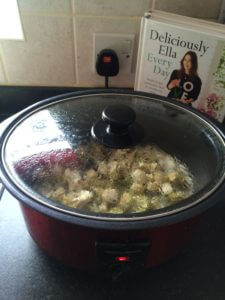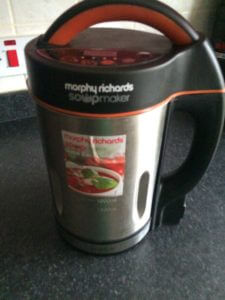When it comes to eating healthy – it’s not about being extreme, it’s about being consistent. It also helps to know exactly what is in the foods you are eating to help you make better choices. Of course there is room in a healthy balanced diet for those treats we all love. It’s just aiming for a more 80/20 balance in favour of the healthier options.
However when it comes to knowing what is in the foods we eat – Food labels can be soooooo confusing!.
So what exactly do we need to look for in our foods ? . Hopefully this little guide will help you –
1. Read the ingredients
When it comes to pre packed food , the ingredients listing will be attached. Ingredients are listed in order of weight, from biggest to lowest. If Sugar, salt or saturated fats such as cream or butter are one of the first five ingredients listed – these will make up a large proportion of the food.
Try to eat as natural foods as possible and limit processed foods as much as you can – a great tip when looking at food is asking yourself – “does it grow in the ground, fly in the sky, run across land or swim in the sea”? . look for food where there are as few ingredients as possible – and if there are any ingredients listed that you can not pronounce or you have no idea what it is – leave it on the shelf!.
2. Use the per 100g column on the Nutrition information is the easiest way to compare foods. The main ones to look for are sugar, salt , fat and saturated fat levels .
3. Detecting Sugar on food labels – Sugar can come disguised as one of the below –
• Anything ending in ose – fructose, glucose, dextrose,maltose
• Syrup
• Honey
• Molasses
• Fruit juice concentrate
• Brown sugar
• Agave
• Barley malt
• Dextrin
• Lactose
• Maple syrup
• Malt / Malt extract
So knowing exactly what you ae looking for, can help you detect any hidden sugars. Yogurts are a prime example of foods that can contain a lot of sugar whilst appearing on the surface healthy. When it comes to Yogurts – usually natural or greek yoghurt is the best choice
A guide to what to aim for –
Low in sugar – 7g or less per 100g
High in sugar – 22.5g per 100g
also Beware of anything that states no added sugar – just because no sugar has been added, does not mean that it is free of any sugars! And don’t get me started on diet pop/soda – the sugar has been removed and instead replaced with nasty chemicals that are actually worse for you then if you drank the regular pop/soda!.
4. Types of fat
• Polyunsaturated fats – a healthy type of fat, that can help lower cholesterol , Omega 3 and Omega 6 are polyunsaturated fats and can be found in fatty fish such as salmon , atlantic mackeral, sardines, trout , and nuts and seeds and eggs.
• Monounsaturated fats – are plant based fats and are also healthy fats . These can be found in Nuts, nut butter , oils , seeds, avocados and Dark chocolate – again beware not all dark chocolate is made equal!
• Saturated fats with the exception of coconut oil are not healthy fats and can increase your cholesterol and increase your risk of developing type 2 diabetes. These are often found in dairy products , fatty meats and pastry.
• Trans fats – the worst of all! . These are the fats that lurk in processed and junk food and pre packaged cakes/biscuits.
Too much Saturated and Trans fats can increase your cholesterol which increases your risk of coronary heart disease.
High in saturated fat – more than 5g of saturates per 100g
Low in saturated fat – 1.5g or less per 100g or 0.75g per 100ml for liquids.
Beware of anything labelled Low fat , reduced fat , Light – people often mistake these as being “healthier” options especially if you have ever followed a Weight watchers, slimming world plan . However what often happens is the fat is removed or reduced , but in order to make it still palatable , sugar can often be added instead so be sure to check the ingredients listing and nutrition info!. These can also often have a higher salt content too!.
5. Lets talk Salt!
Salt is regularly added to processed foods – even things like bread, cake and biscuits!
On labels it can appear as either salt or sodium so watch out
Low salt – 0.3g or less per 100g or 01.g sodium or 100mg sodium
High salt – 1.5g or more per 100g or 0.6g sodium or 600mg sodium.
We often add salt to flavour our food f you are going to use salt for flavouring – try Pink Himalayan salt as this has some amazing health benefits such as acting as a natural detoxifier, promotes healthy blood sugar, promotes better sleep. Contains essential minerals, boosts bone strength and can help prevent muscle cramps and can aid digestion.
6. Fruit and Veg.
Fruit obviously does contain sugar – albeit natural sugars which is better for you and also contains fibre . However it is still a form of sugar so aim for more veg than fruit in your 5-7 day!. Aim for a rainbow plate – the more colours from your fruit and veg, the more Vitamins and Minerals you will be consuming.
So hopefully this will help you understand those labels a little better next time you are shopping x
 Fail to prepare, prepare to fail (Image Pinterest)
Fail to prepare, prepare to fail (Image Pinterest)

 Take the Mis-Fits Challenge!
Take the Mis-Fits Challenge!